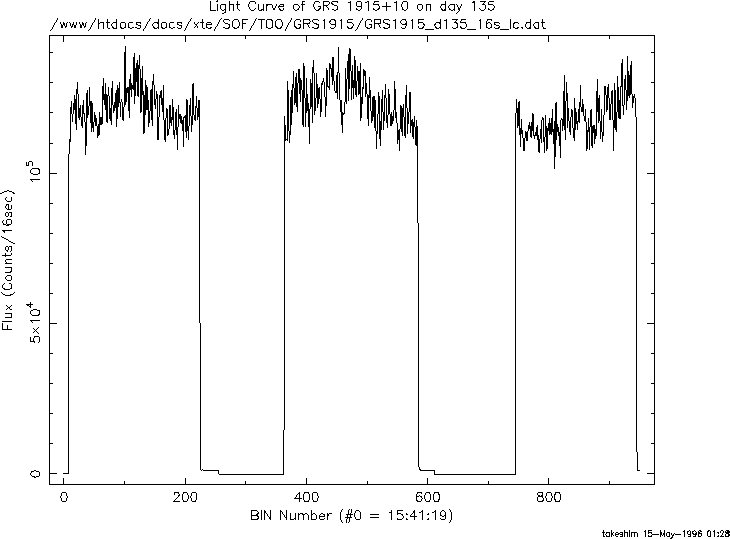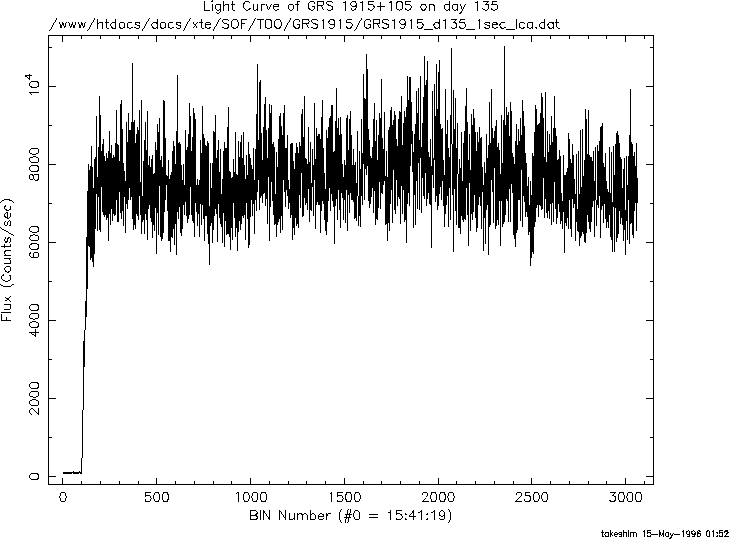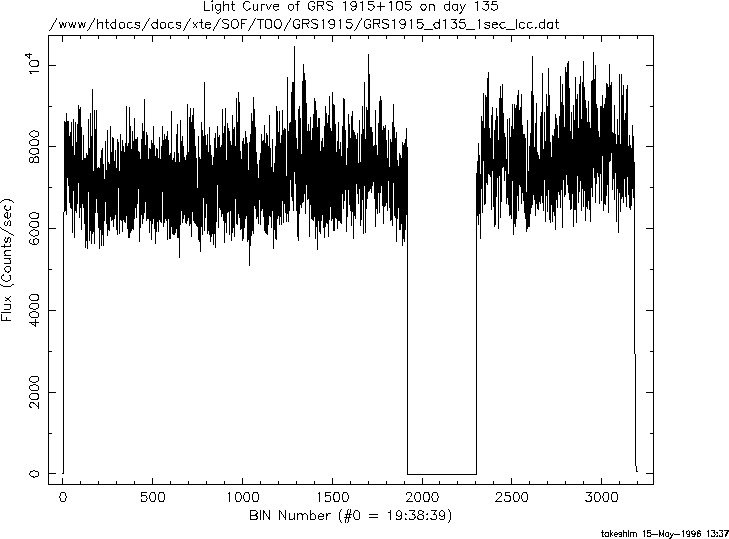|
RXTE TOO observations of GRS 1915+105 on day 135 of 1996
Light Curve of GRS 1915+105 on day 135

|
X-ray light curve of GRS 1915+105 observed with RXTE/PCA.
Observation was done from May 14 15:43 to 19:53, 1996 (UT).
Bin width of each data is 16 second and the bin #0 of X-axis
corresponds to May 14 15:41:19.
Due to the cold temperature problem, observation was performed
with 3 PCU's.
This light curve includes background counts of 960-1440 counts/sec.
|
Download : Ascii Dump,
GIF file,
PostScript File
Light Curve of GRS 1915+105 on day 135
|
X-ray light curves of GRS 1915+105 on day 135 with finer time resolution.
Observation was done from May 14 15:43 to 19:53, 1996 (UT), which was about
3 satellite orbits. "Good Time" of the observation is divided into 3 parts,
i.e., #1: 15:43-16:41, #2: 17:19-18:17, and #3: 19:00-19:53.
Each light curve corresponds to each "Good Time", respectively
The bin #0 of X-axis corresponds to 15:41:19, 17:16:15, and 19:00:10.
Due to the cold temperature problem, observation was performed
with 3 PCU's.
These light curves include background counts of 60-90 counts/sec.
|
#1
 Download : Ascii Dump,
GIF file,
PostScript File
Download : Ascii Dump,
GIF file,
PostScript File
|
#2
 Download : Ascii Dump,
GIF file,
PostScript File
Download : Ascii Dump,
GIF file,
PostScript File
|
#3
 Download : Ascii Dump,
GIF file,
PostScript File
Download : Ascii Dump,
GIF file,
PostScript File
|
Power Spectrum of GRS 1915+105 on day 135 (May 14, 1996)

|
Power spectrum of GRS1915+105 observed with RXTE/PCA
on day 135 (May 14, 1996).
This power spectrum is an ensemble average of 23 spectra,
each of which are calculated from 128 seconds continuous data
in 0.125 second bin. X-axis represents wave number (WN).
Frequency of each WN is given as WN/128 (Hz).
Broad but very strong peak structure (QPO) around WN=14 (9.1 sec) was detected.
These quasi-periodic oscillations are also visible in 1-sec resolution
light curves while the above curves may be too small to see the 9-sec modulation.
Ascii dump may help you to see the modulations.
|
Download : Ascii Dump,
GIF file,
PostScript File
For questions about scheduling of RXTE observations please send email to
xteplan@athena.gsfc.nasa.gov
If you have other questions about RXTE, please send email to one of our
help desks.
Responsible NASA Official:
Phil Newman
Web Curator:
Robin Corbet
|